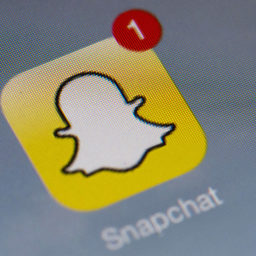The case for a passive discovery mechanism for friends’ playlists on Spotify.
This article started with a tweet on a Saturday evening. Simply put: I wish I had a better interface to discover playlists that are popular among my friends.
Spotify should make a tool that:
– every day surfaces ~5 playlists
– made by friends, or regularly listened to
– with some taste similarity— Bas Grasmayer (@basgras) October 14, 2017
Mark Newman rightfully pointed out that Spotify doesn’t show much interest in surfacing user-created playlists. As a matter of fact, they have even been deemphasising them over the years. Instead they opt for sending people to their own playlists. And their priority makes sense. They have to compete with giants like Apple, Google, Amazon: companies that have money to waste, while Spotify has money to raise.
Streaming is going mainstream
I’m sure to most of us it feels like it’s mainstream already. Hear me out.
Spotify, and other streaming services, are now focusing on consumers beyond the early adopter. These are people that are happy listening to the hits from the radio. These are people that like predictable music experiences. And they’re the bulk of the market.
In order to successfully compete for them, streaming services have to deliver very consistent streaming experiences to these people. This comes in the form of speed, functionality, but also content and programming.
User-created playlists fall outside of Spotify‘s editorial guidelines and metrics that they set for their editors, so it makes it unpredictable. Then again, features like Discover Weekly carry some inherent unpredictability with them: it’s what makes them fun and addictive.
The metrics that a feature like this probably needs to deliver on would look like:
- Amount of time spent listening to music on Spotify in a specified timeframe (the feature should not lead to less playback);
- Some kind of retention metric (should lead to a more engaging product, with less people stopping to use it).
Spotify’s friend activity & navigation
I like seeing what my friends are listening to in the right hand bar. Occasionally, but hardly ever, I click on something someone is listening to, and musically stalk my friend.

The reason why I hardly ever tune into my friends that way, and why I think it’s probably not an often-used feature, is because you tend to see it when you’re already listening to something. It’s not really positioned inside the product as a starting point; it’s more of a distraction.
Starting points, in Spotify, are either search or are presented in the left-hand menu. They are your playlists, or the other navigation points, such as podcasts, browse, and Daily Mix.

The prominent placing of Your Daily Mix stands out to me. I find the feature a bit dull and repetitive, but perhaps that’s because I’m on the end of the user spectrum that explores more than returns to the same music. The point is: Spotify gives prominence to an algorithm that generates 5 daily playlists for users. It’s somewhat unpredictable, compared to what they feature in Browse, but it tries to get people into a daily habit, and its prominent placing suggests that this may be working.
What should also be noted is that none of these navigation items include anything social, despite the entire right-hand bar being dedicated to it.
Browse is boring
I’m always disappointed when I open the Browse tab. I never really see anything surprising and I keep seeing the same things over and over, despite not engaging with them.
There are so many super interesting playlists on search, particularly those by third parties, and I need a way to surface them without finding out on curators’ websites, social media, by using search, or by visiting artist profiles.
Your Daily Friend Mix
So, back to my original tweet, and the requirements for getting a social feature to work well:
- Should lead to people regularly coming back;
- Should lead to increased playback (or at least no decrease).
What are the constraints?
- Not enough friends to meaningfully populate an area;
- Friends don’t listen to playlists;
- Friends only listen to the same playlists as you;
- Friends’ tastes are too dissimilar.
The first issue here is already tackled by the way Spotify handles Discover Weekly and its Daily Mixes: if they don’t have enough data on you, they won’t present these features to you. So in short: if there’s not enough useful data to present meaningful results to you, the feature should not be shown.
However for many users there would be meaningful data, so how to make sure that the suggested content is also meaningful?
The UX of recommendations is a big topic, but in simple terms, there should be thresholds and ceilings on similarity:
- Recommended content should not have a similarity higher than 90% to user’s collection;
- Recommended content should not have a similarity lower than 10% to user’s collection & listening history.
The recommended content can be playlists made by friends, or ones that friends regularly listen to and / or are subscribed to. The percentages are made-up, and there are a lot more things you could factor in, but this way you make sure that:
- Content in the section is interesting, because you’ll discover something new;
- And it’s not too random or too far from your taste, so you’ll always find something you’d want to listen to while opening the section.
If that’s taken care of, then people will keep coming back. Why?
Because it’s super fun to discover how your taste overlaps with friends, or to discover new music with friends. I also think such a feature would work better for Spotify‘s demographic than the more active one-on-one music sharing type of functionality (that Spotify removed recently).
Spotify needs a passive way to connect with music through friends
The messaging functionality that Spotify removed showed low engagement. That’s because music one-on-one recommendations are demanding on both sides. Instead, what has shown to work best on big streaming platforms, are lean back experiences. Discover Weekly is an example of that: it’s focused on the result, rather than the action. The action for discovery is exploration: with Discover Weekly, it’s Spotify‘s albums that do most of the exploring for the user.
That’s what the social side of the service needs. The Friend Activity feed is boring. It hardly ever shows something I’d like to listen to, but I do know my friends listen to music I’d be interested in…
What I need is a section that I can go to when I’m looking for something new to listen to, and then shows friends as social proof for that content. It allows me to connect to friends in new ways. Perhaps even strike up a conversation with them on Facebook Messenger.
Which would pair well with Spotify‘s strategy to drive more engagement through Messenger.








